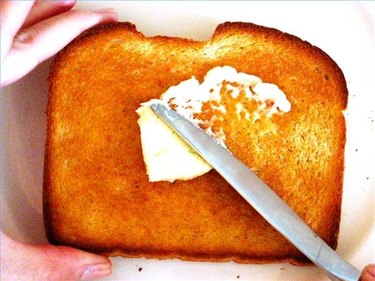
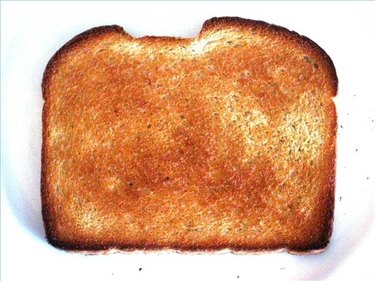
Toasted bread of one sort or another is a staple menu item in households around the world. The appeal of the toasty flavor, caramel brown color and crisp texture is universal. The process of toasting seems so simple--a hot toaster makes bread brown on the outside--but actually, the brown color and appetizing complex flavor of a perfect piece of toast are the result of a precise combination of bread ingredients, dry heat and a bit of chemistry.
Bread Contains Carbohydrates and Protein
Video of the Day
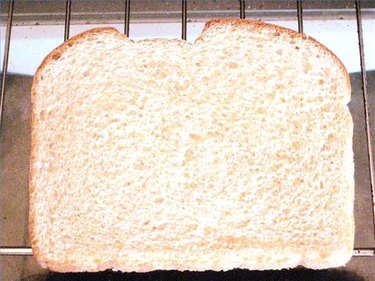
Bread browns in a hot toaster because carbohydrates and protein react chemically when exposed to sufficient heat. The carbohydrates in bread come from simple sugar that may be part of the recipe and the starch in grain or potato flour. The protein in bread is also found in the flour, or sometimes eggs if the bread recipe includes them.
Video of the Day
Carbohydrates and Protein React to Form Many Chemical Compounds
Carbon molecules in the bread sugars and starches react with amino acids of the bread proteins. The chemical process is called the Maillard reaction, named after Louis-Camille Maillard, who discovered the principle behind the browning of bread, meats and other foods. The Maillard reaction is actually a chain of reactions that progressively break the bread carbohydrates down into simpler sugars. This series of reactions produces many chemical compounds that create not just the brown color, but also the complex flavor we associate with toast and other roasted foods.
The Toaster Heats the Bread
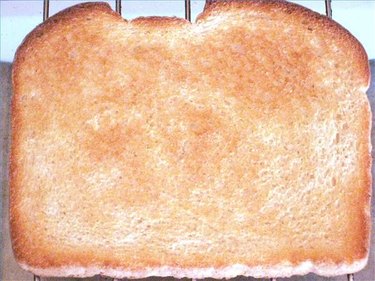
Of course, bread does not brown spontaneously. The process requires heat. A toaster's heating elements are positioned close to the bread slice so that radiant heat is applied directly to the bread. A good temperature for toasting bread is about 310 degrees F. Toasting at lower temperatures will produce brown toast, but it may be dry on the inside. Toasting at higher temperatures does not brown the bread more effectively, just more quickly and perhaps less evenly.
The Surface of the Bread Becomes Crisp and Dry
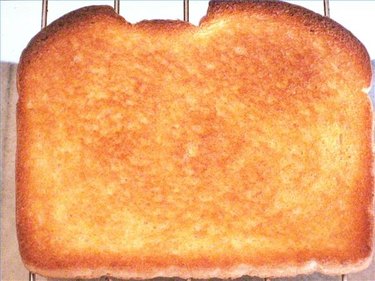
As the bread heats, moisture evaporates from the surface of the bread. The dryness of the bread surface is important for toast browning since the bread carbohydrates and proteins cannot react if too much water is present. The same principle applies to all dry heat cooking methods that produce browning. This also explains why bread and other foods do not brown well in the microwave, since surface drying is minimal in microwave cooking.
Toast Burns When Bread Carbohydrates Fully Carbonize
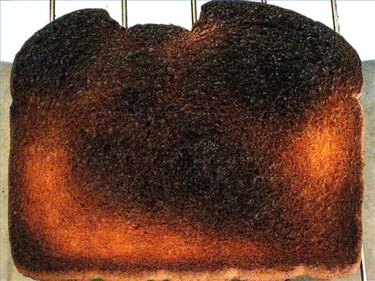
The Maillard reaction is an oxidation reaction, which means that as toast browns, it is technically burning. Eventually a layer of carbon forms on the toast as the carbohydrates react completely with the amino acids. But, what constitutes burned toast from a culinary point of view is completely subjective. You decide the toast is burned when the amount of carbon makes the taste and smell of the toast unappealing to you.